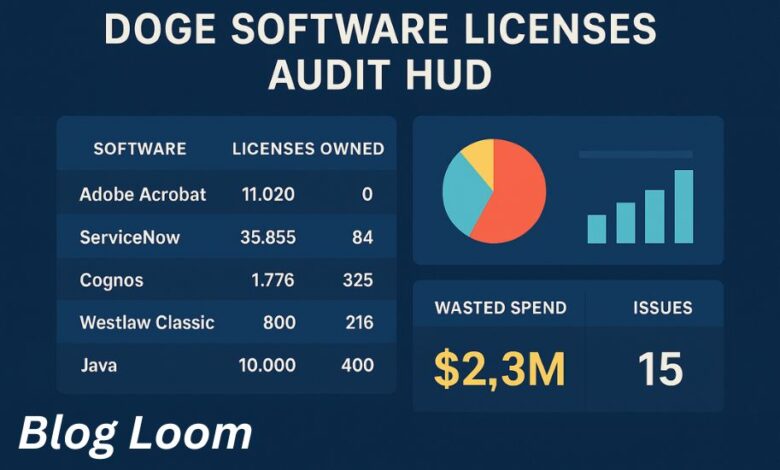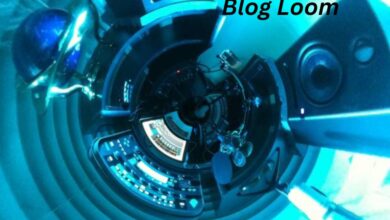DOGE Software Licenses Audit HUD: Exposing License Waste

In today’s digital-first government and enterprise ecosystems, software licensing is a silent budget beast. Billions are spent annually on tools that power public sector IT—from office productivity suites to enterprise analytics platforms and compliance dashboards. But what happens when those licenses go unused? What if tens of thousands of software licenses are paid for, yet never actually deployed or used?
That’s the explosive allegation at the heart of a growing online discussion surrounding the “DOGE Software Licenses Audit HUD.” This narrative claims that an oversight body—commonly referred to as DOGE (sometimes interpreted as the Department of Government Efficiency)—has uncovered a massive surplus of unused software licenses within the U.S. Department of Housing and Urban Development (HUD). The findings, which have been circulating through blog websites, news aggregators, and digital forums, suggest the potential misuse or inefficiency in managing federal software assets.
But is this audit real? How much of the data is credible? And what does this mean for government software procurement? Let’s unpack the full story, separating the substance from the speculation.
Understanding the “DOGE Software Licenses Audit HUD” Narrative
Before diving into the numbers, it’s important to clarify what the phrase “DOGE Software Licenses Audit HUD” refers to—because it’s been interpreted in various ways across online sources.
-
DOGE: In this context, the term “DOGE” does not refer to the Dogecoin cryptocurrency. Rather, it is often used as a nickname or acronym for a watchdog organization or oversight effort—most notably, the “Department of Government Efficiency.” This fictional or proposed body is positioned as a digital auditor focused on rooting out inefficiencies in government IT practices.
-
HUD: HUD is the well-known U.S. Department of Housing and Urban Development, a major federal agency responsible for national policies and programs addressing America’s housing needs. In some descriptions, “HUD” also doubles as an acronym for Heads-Up Display, referencing the data visualization dashboards used during the software audit.
-
Software Licenses Audit: The crux of the story is that DOGE has conducted a full-scale audit into software license usage at HUD and found massive discrepancies between the number of licenses owned and those actually being used.
Claimed Audit Findings: Waste, Ghost Licenses, and Budget Drain
Numerous blog posts and commentary articles cite dramatic statistics allegedly uncovered by the DOGE audit. These reports detail a range of software vendors and products, claiming that license purchases far outstripped actual utilization:
| Software | Licensed Copies | Reported Usage | Notes |
|---|---|---|---|
| Adobe Acrobat | 11,020 | 0 | One of the most cited “completely unused” tools |
| ServiceNow (multiple modules) | 35,855 | 84 | Huge mismatch, major highlight in most articles |
| Cognos (IBM) | 1,776 | 325 | Legacy analytics tool underused |
| WestLaw Classic | 800 | 216 | Legal research tool |
| Oracle Java SE | 10,000 | 400 | Possibly due to outdated deployment policies |
Some reports also claim that several of these licenses had expired but continued to be billed, while others were purchased in bundles or were part of overlapping contracts across different HUD divisions.
Decentralized Procurement and Siloed Inventories
A recurring theme in this story is decentralization. HUD, like many large agencies, reportedly allows multiple departments to manage their own IT procurement. That means software purchasing decisions are often made in silos, without centralized oversight or usage monitoring. This has allegedly led to:
-
Duplicate license purchases
-
Different departments buying licenses for the same tool
-
No centralized license tracking system
-
No automatic reclamation of unused licenses
This fragmented structure may explain how thousands of software licenses could remain unused for months or even years—yet still be billed.
The Role of the “HUD” Dashboard (Heads-Up Display)
One intriguing angle to the audit is the visual component: many sources describe a “HUD” (Heads-Up Display) dashboard that enables real-time visualization of software usage metrics. This system is said to:
-
Display active vs inactive licenses across departments
-
Alert administrators to underutilized tools
-
Flag potential violations of vendor licensing agreements
-
Recommend license reclamation or consolidation actions
Whether this system is a conceptual model or an actual deployed tool remains unclear—but its inclusion in articles adds a futuristic, data-driven flavor to the audit story.
Root Causes of Software Waste
Beyond the numbers, the DOGE Software Licenses Audit—if true—highlights several systemic issues that are not limited to HUD or even to federal agencies. These include:
1. Lack of Software Asset Management (SAM) Systems
Without a proper SAM platform, organizations struggle to keep track of licenses, renewals, allocations, and usage metrics. Licensing data is often buried in spreadsheets or procurement logs.
2. Procurement Pressure and Vendor Lock-In
Some vendors bundle their offerings or require volume commitments to secure discounts. This leads agencies to over-purchase licenses “just in case.”
3. IT Staff Turnover and Knowledge Silos
When IT or procurement personnel leave, their license management knowledge often leaves with them, leading to untracked renewals or orphaned tools.
4. Lack of Telemetry Integration
Without software telemetry (automatic usage reporting), it’s impossible to distinguish active licenses from dormant ones.
Pushback and Criticism: A Closer Look at the Numbers
Not everyone is convinced by the audit narrative. Several critics—especially those in government tech and enterprise procurement—have questioned the validity and transparency of the reported numbers.
Key concerns include:
-
Licensing Models: Some licenses are issued per device, not per user. So a discrepancy between number of licenses and number of users is not inherently evidence of waste.
-
Vendor Agreements: License counts often include test environments, contractor access, or disaster recovery instances. These are necessary even if usage appears “low.”
-
Echo Chamber Risk: Many blogs citing the audit repeat the same numbers verbatim, suggesting that they may all stem from a single, unverified source.
-
No Public Audit Report: As of now, no official HUD documentation or GAO (Government Accountability Office) audit confirms the DOGE report’s existence.
Still, even without confirmed authenticity, the audit has sparked important conversations.
Implications for Public Sector IT
Whether the DOGE audit is fully verifiable or not, it reflects real challenges faced by government agencies:
-
Rising software costs and flat IT budgets
-
Vendor pressure for multi-year contracts
-
Demand for transparency from taxpayers and watchdogs
Agencies may soon face greater demands to implement License Compliance Audits, usage telemetry, and automated license management platforms.
Private Sector Lessons
Enterprises can also take cues from the DOGE audit narrative. Even well-funded companies can lose track of software entitlements. Some takeaways include:
-
Perform regular internal audits of license usage
-
Reclaim licenses after employee offboarding
-
Consolidate tools with overlapping functions
-
Monitor usage with built-in or third-party tools
-
Negotiate flexible license terms with vendors
Reimagining Audits: A New Role for AI and Dashboards
Imagine a future where license audits are no longer conducted once a year with spreadsheets, but in real-time with AI-enhanced dashboards. That’s what the DOGE HUD model gestures toward—a world where:
-
AI flags unused or low-value licenses
-
Dashboards visualize risks before budget season
-
Compliance officers receive real-time alerts
-
Dashboards plug into HR, IT, and Finance systems for end-to-end visibility
Whether this is a reality now or still on the horizon, the concept is both promising and essential.
Final Thoughts: Between Fiction and Reform
The DOGE Software Licenses Audit HUD may be part audit, part metaphor, and part cautionary tale. But regardless of how much of it is literal or fully verified, it shines a spotlight on a neglected area of digital transformation: license accountability.
If HUD or any other agency can waste millions on dormant software, it’s a signal that better governance tools are needed—at every level of public and private operations.
“Blog Loom“ will continue to track stories like this that highlight where technology, policy, and accountability intersect. Stay tuned for deeper dives, smarter tech coverage, and thought-provoking audits of the digital world we all pay for—whether we use it or not.
You may also read: Top AI Video Tools for Effortless Content Creation in 2025




